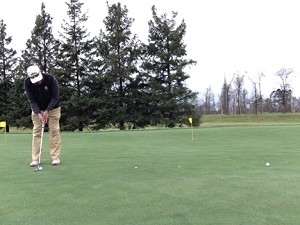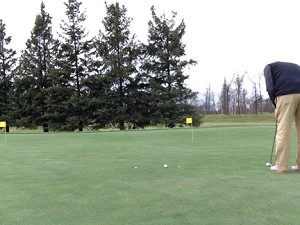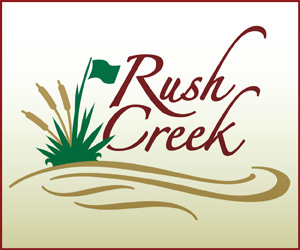Distance Control
By Chris Foley
Golf is one of the few games that is not practiced on the actual field of play. Games like football, basketball, tennis, and hockey are all practiced on the court, rink or field where the game is actually played. Unfortunately, in golf, the majority of our practice occurs at a driving range. Most of the time the driving range has no resemblance to the golf course. This environment typically doesn’t lead to great performance on the golf course.
This golf season in each issue of Tee Times, we will present a practice plan, drill, or game that is designed to help you create a great practice situation and help you practice for performance.
Practicing for performance must include the following elements.
1. The drill, game, or exercise needs to create awareness and be engaging. Things like changing targets frequently, creating different sensations or feels, and pushing you out of your comfort zone
2. The practice needs to be measurable. When we measure our practice, it gives us a true gage of how we are doing. From day to day we can track improvement or regression.
3. There needs to be consequence in practice. We need to compete while we practice. This is what truly bridges the gap between the range and the golf course. The practice experience needs to be closer to the actual golf course experience.
One of the challenges in the spring of the year is regaining a feel for distance on the greens. Distance control is the most important element of putting. Having great distance control minimizes three putts and enhances the opportunity to make putts.
For better distance control, try the following exercise.
1. Place two coins or ball markers on the practice green approximately 18 inches apart. The markers create a zone where you are trying to stop the ball. The markers should be placed so that from one side the putt is uphill and from the other side the putt is downhill.
2. Place a ball at one pace away from the zone on the uphill side and a ball one pace away on the downhill side of the zone. The objective is to putt each ball and have them stop inside of the zone. Alternate between hitting the uphill putt and the downhill putt.
3. Move back one pace if both balls stop in the zone.
4. Continue this process moving back one pace following having both balls stop in the zone.
5. The exercise is completed when you have successfully had both balls stop in the zone from one, two, three, four and five paces on each side of the hole.
6. Track how many putts it takes to complete the exercise.
To add an element of competition to this exercise, practice with a friend. Start at one pace someone on each side of the zone. Each player hits a putt. If the putt ends in the zone the player receives a point. Switch sides and move back one pace. Continue this process moving back one pace after each player putts. The first player to get to five points wins. After the players putt from five paces, if neither player has scored five points move back to one pace away from the zone.
By utilizing this exercise your distance control will become more proficient, you will make more putts and will shot lower scores!
I welcome your feedback and questions. Please contact me at cfoley@ChrisFoleyGolf.com, 218-820-9426. Follow me on Twitter @ChrisFoleyGolf and look for more great practice tips on #PracticeForPerformance Thursdays.































